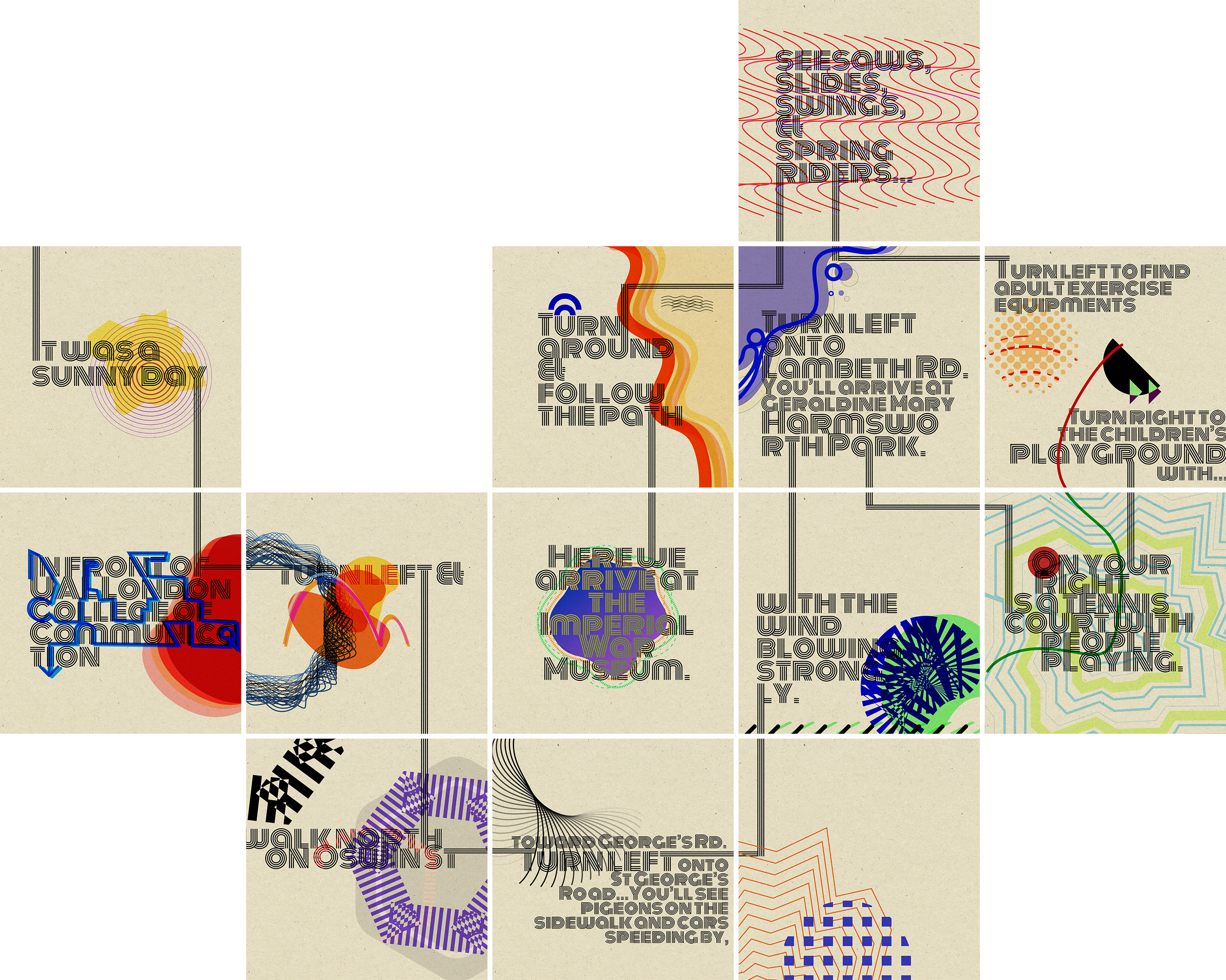


This project began as a team effort and evolved into my personal visual exploration. In this case study, I will focus on my individual experimentation. However, it's important to highlight the fantastic work by Kexin He, who created an impressive interactive sound map. Due to my minimal contribution to the team effort, this case study will primarily showcase my personal experimentation.
This exploration aims to take the audience on a visual journey of sound traveling. Originating from sounds collected in a London park over 45 minutes, the goal of this visualization is not to present precise sound data, but to use the data as a sample to conceptualize the idea of a visual sound experience. Whether the audience has never been to London or has hearing impairments, I hope this sound map can evoke an imaginative sense of the park and its sounds. Lines, shapes, and typefaces represent different objects or specific sounds traveling through the area at specific times. Use your eyes to hear them.


There are many ways to draw a map, including various artistic methods. After several explorations and attempts, I decided on a typographic approach. Inspired by Google Maps' audio directions from A to B, I created this map using typography. I separated the map into different pieces and connected them using a specific typeface line composition. The result is intriguing, as it provides direction while leaving much to the imagination.


Shapes, colors, and lines form patterns overlaid on the abstract map, creating playful and attention-grabbing images that represent the sounds traveling across the map. The exploration is ongoing, but at this stage, my goal is to use visualization to create an illusion and provide space for users to imagine which shapes or colors represent different kinds of sounds.


The separate but interconnected pieces are designed like puzzles or LEGO blocks, allowing the audience to piece them together to form one or multiple stories based on their interpretations.






The audience can choose to view the pieces separately or assemble them into a complete map based on their preferences. Although there are many ways to piece them together, here is one example:
